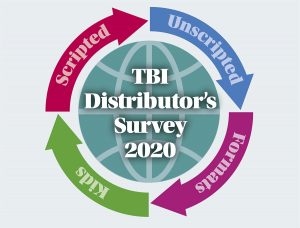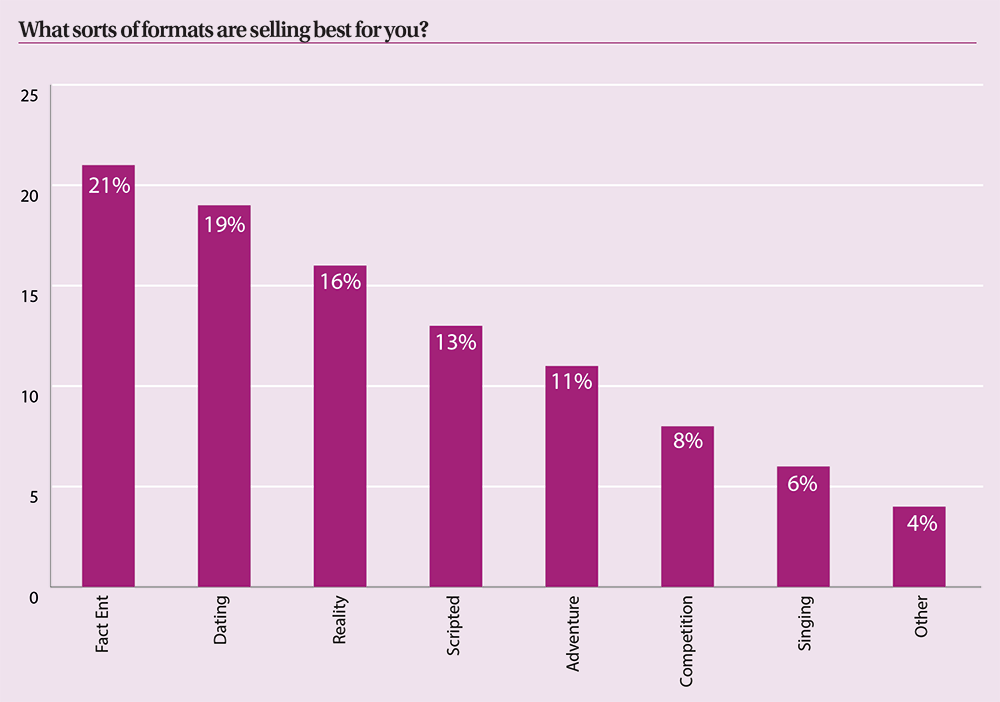TBI Distributor’s Survey 2020 – Part 3: Formats
 Few areas of the content business have adapted as quickly over recent years to the vast changes in the business as the distribution sector, with companies large and small adeptly planning and executing savvy strategies to ensure they remain relevant. The effect of the Covid-19 pandemic has again tested this sector’s resolve and it is clear from this year’s findings that the past six months have had a considerable toll on sales. Yet there are positives and an overwhelming optimism that the industry can rebound.
Few areas of the content business have adapted as quickly over recent years to the vast changes in the business as the distribution sector, with companies large and small adeptly planning and executing savvy strategies to ensure they remain relevant. The effect of the Covid-19 pandemic has again tested this sector’s resolve and it is clear from this year’s findings that the past six months have had a considerable toll on sales. Yet there are positives and an overwhelming optimism that the industry can rebound.
Formats: Bible study
Format distributors have faced a turbulent six months, unable to assuage the pandemic’s effects by selling finished tape as their colleagues in drama and unscripted were able to do
The format industry was already facing considerable challenges prior to the effects of Covid-19, as mergers and acquisitions buffeted the smaller and more independent operators in the sector.
Banijay’s acquisition of Endemol Shine Group created a format behemoth like no other, yet even against this environment of M&A and a global pandemic, the more agile format distributors have been able to navigate the market turbulence to remarkable effect.
“Production and strategic partnerships will become harder once consolidation by bigger companies takes place,” says Fotini Paraskakis, EVP of global entertainment at The Story Lab, but she adds that her company has experienced a notable increase in interest over recent months.
The pandemic has had a notable effect on revenues, however, with more than three-quarters of respondents saying that the effects of Covid-19 has left their businesses worse off.
Banijay Rights CEO Cathy Payne adds that there are numerous knock-on effects for the business, which will also be felt by those in the format sector. “The pause in production has affected pipelines and broadcaster schedules,” she says, “and in addition to this there is an increase in production budgets caused by the Covid production hiatus as well as Covid protocols needed once production resumes.”
Almost 30% of respondents have had to lay off staff as a result, but reflecting the trend across the content business, the vast majority believe their business and the market will improve. This figure stands at 85%, however, showing a small but noticeable difference compared with other sectors and perhaps explained by the deep impact that falling advertising revenues has had on the format sector’s commerical broadcaster clients.
Risk & reward
Although ad spend is now by and large rebounding for networks around the world – albeit from severe lows during the depths of the crisis earlier this year – the impact has been great and the effect on programming clear. Broadcasters are tending to look for safer bets and the result is causing format distributors to adapt their strategies.
“There is a reduction in risk from broadcasters willing to take on content,” says Siobhan Crawford, sales and acquisitions at the Netherlands-based Primitives, “and that means recommissioning existing brands is most common.”
This focus on risk and commercial broadcasters with squeezed incomes is reflected in this year’s findings and it was occurring prior to the pandemic. Outside of the immediate repercussions of Covid-19, more than 70% of respondents said the greatest challenge for their businesses over the past 12 months had been falling ad spot revenues at networks. The number for accessing and controlling rights stands at 28% while market consolidation was cited over 42% of the business.
But there are deals to be had and bibles to be sold. Dating, factual entertainment and reality formats remain among the best-sellers, but there has also been noticeable demand for scripted formats too, according to respondents.
Market leaning
Where the format business differs most from its scripted and unscripted siblings, perhaps, however, is its view of the way markets are changing. While online sales portals might provide an opportunity for finished tape, the potential to do a deal on a format is clearly reduced, making face-to-face discussions – even if it’s via a Zoom call – vital.
Industry insight
“It’s been a challenging year for formats with smaller budgets and less opportunities to leverage on digital distribution platforms. With the prospect of physical events still uncertain, distributors in this space will need to develop more digital savvy to reach new markets.”
Ian McKee, Founder & CEO of Vuulr
More than 70% of respondents say they are not using online distribution platforms, but more than 80% do not expect to attend as many markets in 2021 as they did in 2019. That is partly because of Covid, but numerous respondents were clear that they do not expect the physical events business to return to pre-pandemic levels in the near future.
Banijay’s Payne, whose catalogue includes some of the biggest shows in the business – from Survivor to Big Brother – says the physical events business will remain a focus for her company but adds that at present, there are no plans in place for a return to the traditional cycle in the immediate future.
“Events and trade markets will always play an important role in our business, however the health and safety of our employees must come first,” she says. “We will continue to closely follow government guidelines and work with event organisers to collaborate with them for online and virtual events where possible. It is premature to plan physical attendance at this time.”
Nevertheless, more than 50% still consider MIPTV to be a ‘must-attend’ event while more than 85% put MIPCOM in that same bracket. And 71% will travel to Asia TV Forum at the next opportunity, underlining the huge importance of that region in the global formats business.






